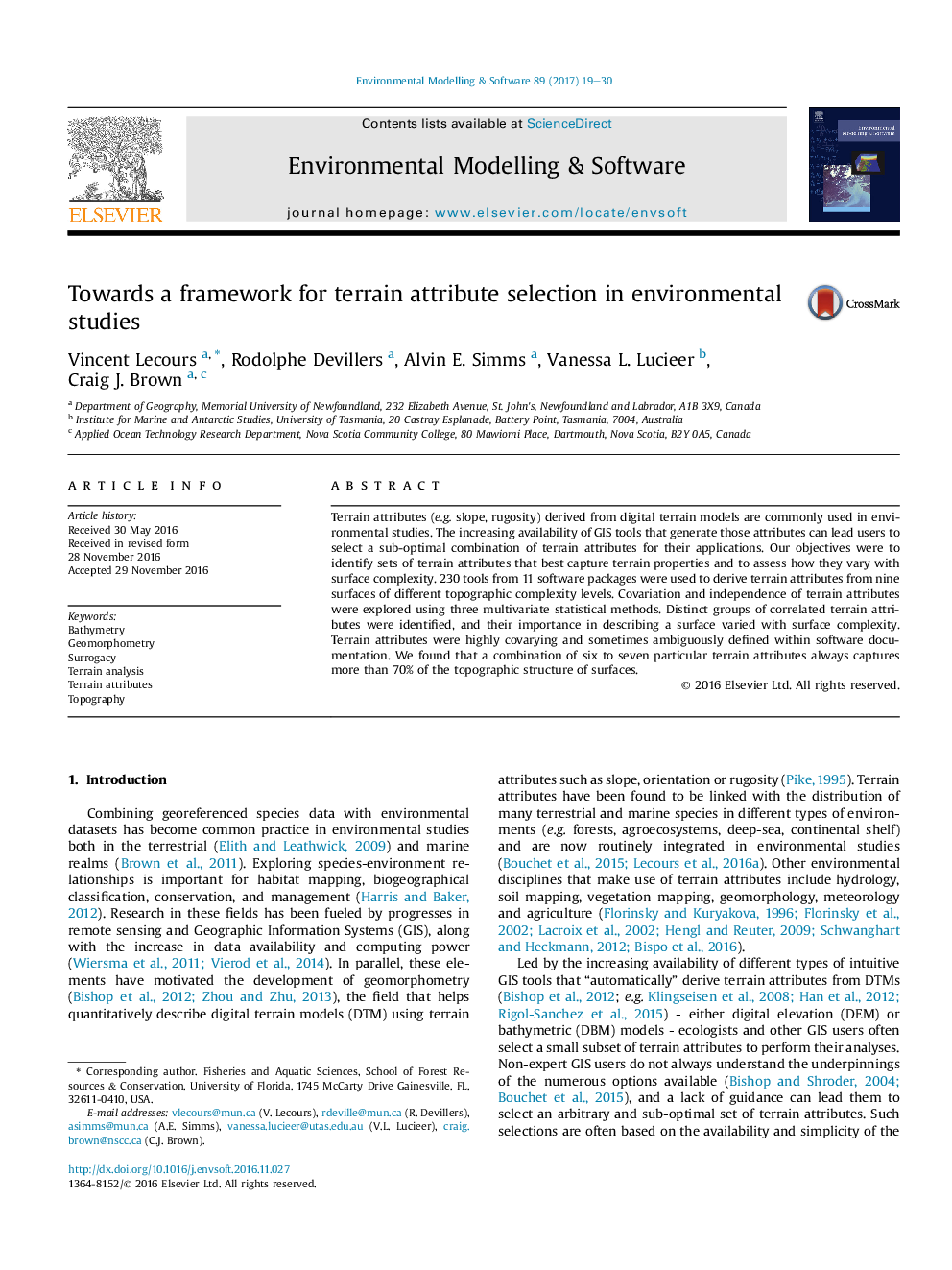| Article ID | Journal | Published Year | Pages | File Type |
|---|---|---|---|---|
| 4978323 | Environmental Modelling & Software | 2017 | 12 Pages |
Abstract
Terrain attributes (e.g. slope, rugosity) derived from digital terrain models are commonly used in environmental studies. The increasing availability of GIS tools that generate those attributes can lead users to select a sub-optimal combination of terrain attributes for their applications. Our objectives were to identify sets of terrain attributes that best capture terrain properties and to assess how they vary with surface complexity. 230 tools from 11 software packages were used to derive terrain attributes from nine surfaces of different topographic complexity levels. Covariation and independence of terrain attributes were explored using three multivariate statistical methods. Distinct groups of correlated terrain attributes were identified, and their importance in describing a surface varied with surface complexity. Terrain attributes were highly covarying and sometimes ambiguously defined within software documentation. We found that a combination of six to seven particular terrain attributes always captures more than 70% of the topographic structure of surfaces.
Related Topics
Physical Sciences and Engineering
Computer Science
Software
Authors
Vincent Lecours, Rodolphe Devillers, Alvin E. Simms, Vanessa L. Lucieer, Craig J. Brown,
